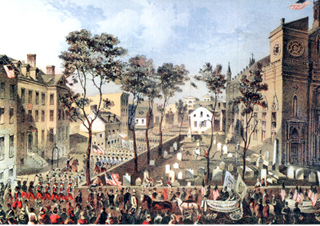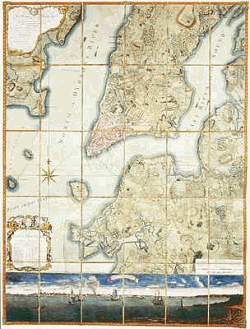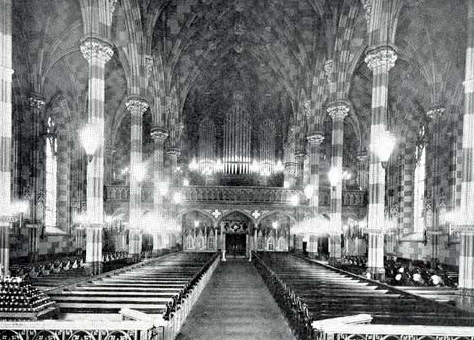Historical Background of the Cathedral (2)
The original St. Patrick's Cathedral in New York City, located at Mott and Prince Streets, was built between 1809-1815 to the design of Joseph-François Mangin, the architect also responsible for New York City Hall. At the time of its construction, the northern boundary of built-up Manhattan was Canal Street, and the Cathedral was located amidst meadows and woodlands.
The oldest Roman Catholic church building in New York City, it played vital social and political roles in the lives of young Irish immigrants, helping them adapt to their new home. In 1844, Bishop Hughes organized thousands of Irish men to defend the Cathedral against the massive anti-Catholic torch-lite mob, led by the anti-immigrant American Republican mayor of New York, James Harper. On the protective walls around the Cathedral, he positioned sharp-shooters, and the Bishop threatened the mayor that the city would become a "second Moscow" if there was as much as one Catholic harmed.
Land for a new cathedral on Fifth Avenue and 50th Street was purchased in 1852 and construction started in 1859. Before the new cathedral could be completed, the original cathedral was restored and rededicated by John Cardinal McClosky in 1868. When the new Cathedral was finished in 1879, the Old Cathedral became a parish church.
(1) O. Ochse, A History of the Organ in the United States.
(2) J. Mendelssohn, A History of St. Patrick's Old Cathedral.


